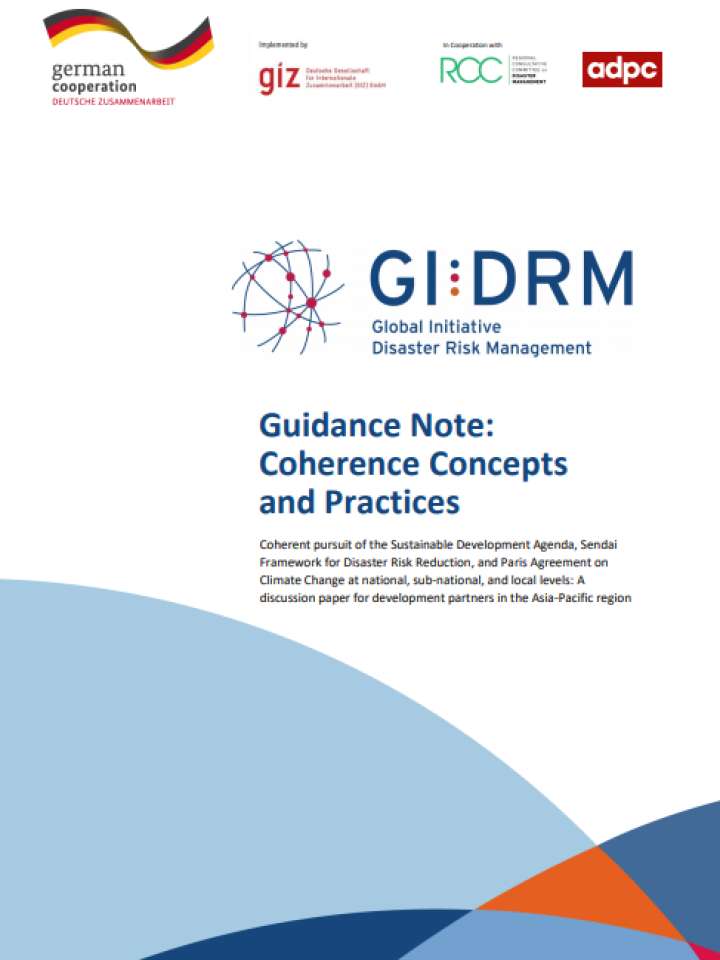Guidance note: Coherence concepts and practices - a discussion paper for development partners in the Asia-Pacific region
The purpose of this guidance note is to explore how coherence of the post-2015 global frameworks - especially the Sustainable Development Agenda, the Sendai Framework for Disaster Risk Reduction, and the Paris Agreement on Climate Change - may be pursued in practice in Asia-Pacific countries. The document intends to promote reflection and discussions on coherent planning, implementation, and reporting at all levels within countries – at local, sub-national and national levels - and on the role that development partners may have in supporting government institutions and mechanisms.
The objectives of this guidance note are therefore:
- To examine the what, why, and how of coherent pursuit of the global frameworks – with particular focus on countries in the Asia-Pacific region.
- To propose characteristics which would recognize if, or to what extent, coherence is present in planning, implementation, and reporting of the global frameworks in a country.
- To highlight emerging themes and questions relating to coherent practices, which may stimulate further discussions among development partners.
The primary audience of this guidance note are development partners in the Asia-Pacific region which actively support government institutions and mechanisms at the country level, to pursue one or more of the three global development frameworks. The broader audience which may derive value are the government focal/coordinating agencies for the respective frameworks in a country, as well as other stakeholder groups at the regional and country level (e.g. research institutions, chambers of commerce, civil society fora), which have an interest in the coherent pursuit of the frameworks.
In terms of scope and approach of this guidance note, this research is based on a desk review of “coherence” literature from the international and regional perspectives, and supplemented with key informant interviews with practitioners from the Asia-Pacific region who are supporting the coherent pursuit of the frameworks.
The following sections of this guidance note are:
- a working definition of “coherence” based on the relevant literature
- discussion on why coherence should be pursued
- discussion on how (generally) coherence could be pursued
- a proposed coherence model at the country level
- presentation of characteristics of coherence operationalization at the country level
- summary of discussion points; and annexes.
Explore further
